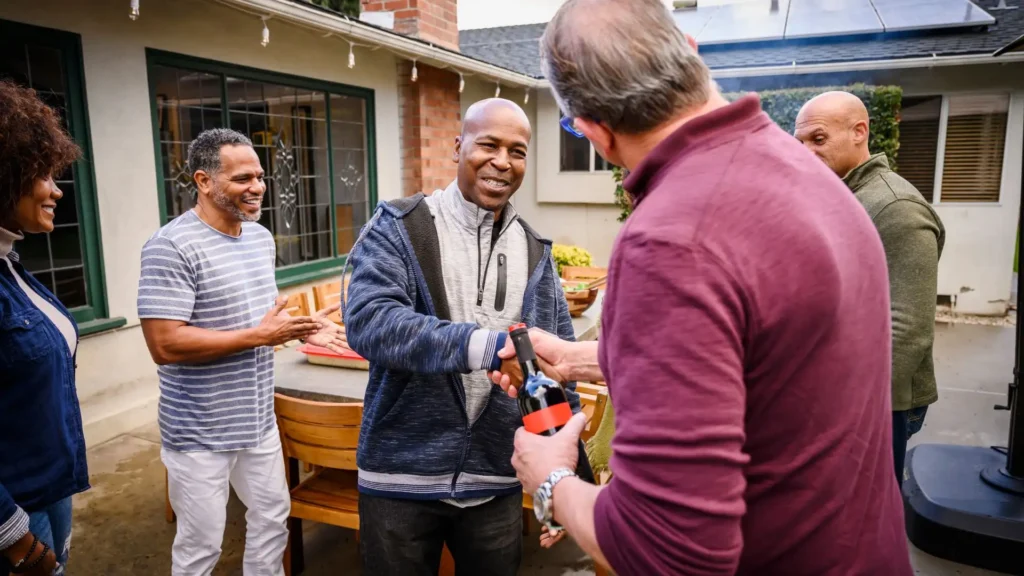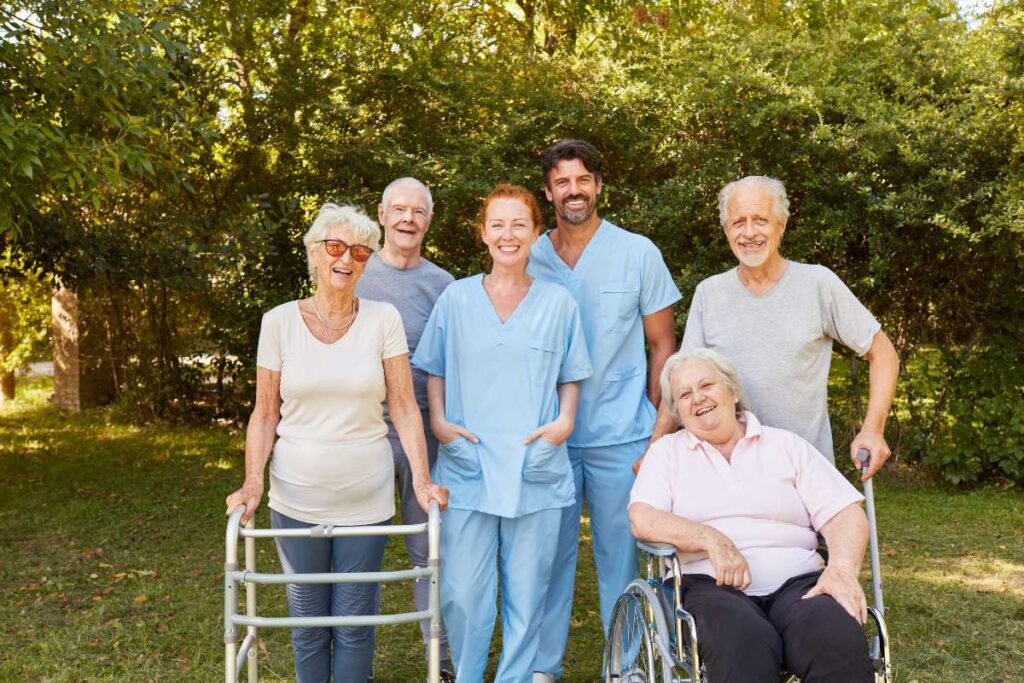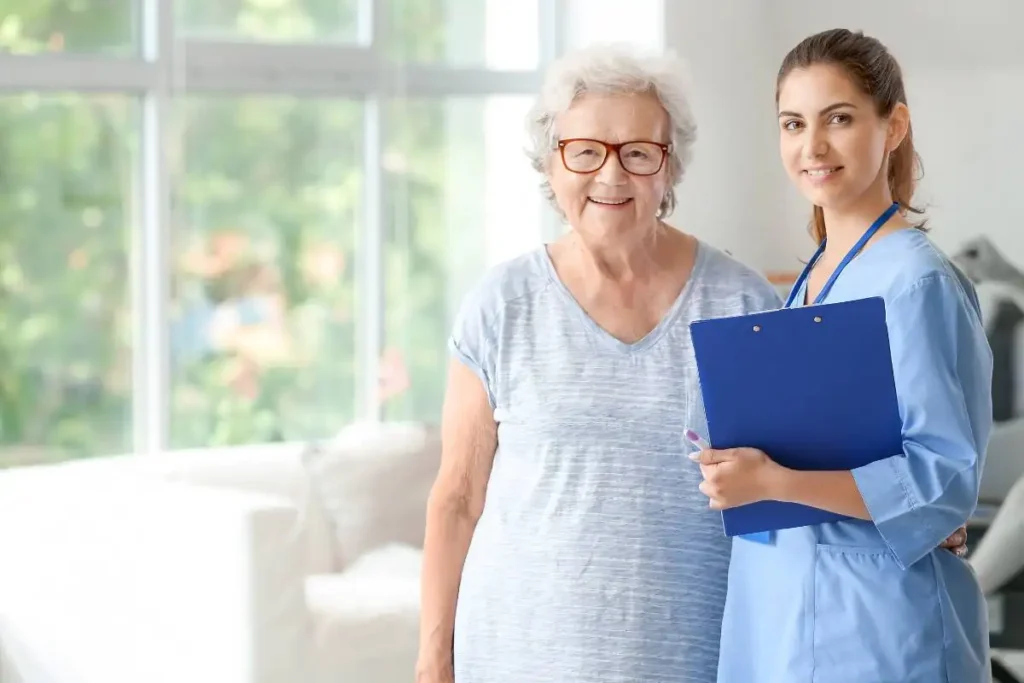Hosting a senior-friendly gathering isn’t rocket science, but it requires a bit more attention to detail. After all, you want your guests—especially the seniors in attendance—to feel safe, comfortable, and able to fully enjoy themselves.
Whether it’s a family reunion, a birthday party, or just a casual get-together, making sure that your space and activities are senior-friendly can make a big difference.
When you think of “senior-friendly,” the first thing that comes to mind is likely accessibility. But it goes beyond that. It’s about comfort, ease of communication, and catering to different needs.
In this article, we’ll walk you through practical tips and suggestions on how to host a senior-friendly gathering. These tips come from experience and personal insights, so they’re tried and tested.
The goal of hosting a senior-friendly gathering is simple: creating an environment where everyone, no matter their age or physical ability, can have a good time.
If you’ve ever attended a party where you felt out of place or uncomfortable, you know how it can affect your enjoyment. For seniors, this is especially true. As we age, mobility, vision, hearing, and even energy levels can change, so the environment and activities you offer need to consider these differences.
A senior-friendly gathering is one where accessibility, comfort, and social interaction take center stage. With a few thoughtful adjustments, you can make sure your senior guests feel valued and included.
Step 1: Plan for Accessibility
Clear Pathways and Safe Movement
One of the biggest challenges that seniors face at gatherings is the physical layout of the space. If there are obstacles like rugs, cords, or crowded furniture, it can make it difficult—and even unsafe—for older guests to navigate.
Imagine trying to walk with a cane or walker and bumping into something, or worse, tripping. It’s easy to overlook these details, but it’s crucial to address them.
- Clear the Floor: Start by ensuring there are no tripping hazards on the floor. Move any rugs or floor mats that could cause people to stumble. Make sure the walkways are wide enough for mobility aids like walkers or wheelchairs. If possible, mark clear paths with tape or just keep the area clutter-free.
- Move Furniture Smartly: If your living room is full of chairs or tables, try to reposition them to allow for better flow. You don’t want the space to feel too cramped. Leave enough room for guests to move freely, especially if some of them may need extra space to maneuver.
Seating Arrangements and Comfort
Older guests may not want to stand for too long, so it’s essential to provide seating options where they can rest comfortably. The type of seating is just as important as the amount of seating you provide.
- Comfy Chairs: Choose chairs that offer good support. Chairs with armrests are ideal for seniors who may need help getting up or sitting down. Avoid seating that’s too low, as it can be tough for seniors to get up from a low chair. A higher chair or a sturdy couch will be easier to navigate.
- Cushions for Extra Comfort: Some seniors may need extra cushioning for added comfort. Throw pillows or cushions can make a huge difference for anyone who’s planning to sit for a while. It’s about ensuring that they feel comfortable enough to enjoy the event.
Bathroom Accessibility
Seniors may require more frequent bathroom visits, so it’s important to make sure the bathroom is easily accessible. If you have elderly guests, you’ll want to ensure that their bathroom experience is safe and easy.
- Grab Bars: Installing grab bars in the bathroom is a quick way to make the space safer for seniors. These bars provide something to hold onto when sitting down or standing up. If you don’t have grab bars, be sure to remind seniors to ask for help if they need it.
- Non-slip Mats: A wet floor can be a slipping hazard. Placing non-slip mats in the bathroom can provide additional safety. This simple touch will ensure that seniors feel safe when moving around.
- Accessible Doors: Make sure the bathroom doors are wide enough to accommodate wheelchairs or walkers if needed. You may need to replace the doorknobs with lever handles, which are easier for those with limited hand strength to operate.
Step 2: Creating a Comfortable Environment
Once the physical setup is taken care of, it’s time to focus on the atmosphere of your gathering. Seniors, like anyone else, want to be comfortable and feel relaxed. A few simple tweaks can go a long way in setting the right mood.
Lighting Matters
Lighting is an often-overlooked element that can significantly impact the comfort of your guests. Poor lighting can make it difficult for seniors to see where they’re walking or interact with others.
- Soft Lighting: Seniors may have reduced vision, so try to avoid harsh, bright lights. Use soft lighting that doesn’t strain the eyes but still illuminates the room enough for safe movement. Table lamps with warm bulbs or LED lights can work wonders.
- Task Lighting: Make sure there’s proper lighting for tasks like reading or eating. A small, adjustable lamp on a table or sideboard can help seniors focus on what they’re doing.
- Natural Light: If possible, take advantage of natural light. It’s not only visually pleasant but also boosts mood. Open the blinds or curtains if it’s daylight to let the sunshine in. Just be careful of glare, especially if the sun is directly hitting a surface.
Temperature Control for Comfort
As we age, we tend to become more sensitive to temperature extremes. A room that’s too hot or too cold can make it uncomfortable for seniors to enjoy themselves.
- Moderate Temperature: Make sure the temperature is comfortable for everyone. If you’re hosting in the summer, ensure that there’s air conditioning or fans running to keep things cool. In the winter, a space heater can keep the area warm without overheating the entire house.
- Adjustable Heating/Cooling: If you have adjustable heating or cooling in your home, it might be a good idea to give your senior guests control over their environment. Consider providing extra blankets or shawls for anyone who gets cold easily.
Managing Noise Levels
High noise levels can make it hard for seniors to enjoy the event or hear the conversations around them. It’s important to find a balance between background music and enough quiet so that people can chat comfortably.
- Keep Music Low: While music is great for setting the mood, make sure it’s not overpowering. Loud music can be irritating for seniors, especially those with hearing impairments. Play music at a level where people can still hear one another.
- Quiet Spaces: If your event is large, consider setting up a quiet area where guests can take a break from the noise. This can be a designated room or a corner of the space where people can relax, chat, and have a calm conversation.
Step 3: Food and Drink Considerations
Food is a big part of any gathering, and you don’t want to miss out on providing options that are both enjoyable and easy for seniors to manage. You may have guests with dietary restrictions, specific preferences, or food sensitivities.
Dietary Restrictions and Preferences
As people age, their dietary needs often change. Seniors may be dealing with health conditions like diabetes, hypertension, or high cholesterol, all of which require certain dietary adjustments.
- Ask in Advance: Before the event, ask your guests if they have any food restrictions. Whether it’s gluten-free, low-sodium, or sugar-free options, being proactive will ensure you have something for everyone.
- Healthy, Flavorful Options: Focus on offering healthy foods that still taste great. Think grilled vegetables, fresh fruit, lean meats, and whole grains. You can also offer a few treats, but keep the options balanced.
Easy-to-Eat Foods
Texture plays a huge role in the foods that seniors can eat. Foods that are easy to chew and swallow will be appreciated, especially if someone has difficulty with hard, crunchy items.
- Soft Foods: Offer plenty of soft food options like mashed potatoes, soft pasta, tender meats, and casseroles. These are easier for seniors to manage than tough cuts of meat or dry snacks.
- Finger Foods: Consider finger foods like sandwiches, wraps, or bite-sized appetizers. These are not only easy to eat but also great for seniors who don’t want to bother with utensils.
Hydration and Drink Choices
Seniors are often at risk of dehydration, which can lead to dizziness, confusion, and other health problems. Make sure to provide plenty of drinks for everyone, including water, juice, and non-alcoholic beverages.
- Water, Water, Water: Offer plenty of water throughout the event, and consider placing water pitchers or bottles in different areas for easy access.
- Non-Alcoholic Drinks: While some seniors may enjoy a drink, others may prefer non-alcoholic options. You could offer mocktails, sparkling water, or iced tea as alternatives.
- Alcohol in Moderation: If alcohol is involved, make sure that seniors are consuming it in moderation. Too much alcohol can lead to dizziness, confusion, or other issues, especially for those on medication.
Step 4: Activities and Entertainment for Seniors
Planning activities for your senior guests doesn’t have to be complicated, but it does need to be inclusive and easy to participate in.
Simple Games and Fun Activities
While some seniors may enjoy a round of bingo or cards, others may prefer something more interactive and engaging.
- Card Games and Board Games: Card games like bridge, solitaire, or simple games like Go Fish are great options. If your gathering is small, board games like Scrabble or checkers can also work well.
- Trivia: A trivia game based on common knowledge or memories from different decades is a fun way to get everyone involved. Trivia can spark lively conversations, especially if the questions relate to history, music, or movies from the past.
- Memory Lane: Sometimes, the best activity is just sitting down and chatting about the past. Seniors often have fascinating stories to tell, and it can be enriching for everyone to hear their experiences.
Step 5: Be Mindful of Mobility and Resting Needs
Seniors may need more time to rest, especially if they have mobility challenges. Ensuring they have places to sit and opportunities to take breaks is important.
Offer Help with Mobility
If your senior guests are using walkers or wheelchairs, make sure that there are plenty of clear spaces for them to move around easily.
- Offer Assistance: Don’t be afraid to offer help when you notice someone struggling. Sometimes, even just offering an arm to hold onto can make a big difference.
- Rest Areas: Provide places for seniors to sit down and relax. These could be chairs in quieter parts of the space, where they can have a break if they need it.
Step 6: Set the Right Tone
Creating the right tone at your event can make all the difference. Seniors want to feel comfortable, valued, and engaged. They should never feel like they’re being overlooked or excluded.
Encourage Participation
Try to make your gathering as interactive as possible. Ask your senior guests about their experiences, hobbies, or anything that interests them. This will help them feel included in the conversation.
Be Patient and Understanding
Older adults may take a little longer to get up, move around, or respond to a question. Be patient, and give them the time they need to participate in the activities.
Step 7: Ask for Feedback
After the event, reach out to your senior guests and ask them what they liked and what they would change. This feedback is invaluable for improving future gatherings.
Final Thoughts
Hosting a senior-friendly gathering isn’t about grand gestures—it’s about thoughtful, small changes that create a more inclusive environment. Keep the space accessible, the activities engaging, and the atmosphere relaxed, and you’ll have a successful event where everyone can enjoy themselves, no matter their age or ability. So go ahead, plan that senior-friendly gathering and make it an event to remember for all the right reasons!





